 |
by Jackson Chen on (#72AKJ)
Several of Waymo's autonomous vehicles were seen stuck in the middle of San Francisco streets following a significant power outage that took out the city's traffic lights. Waymo responded to the power outage by suspending its ride-hailing services in the city, but images and videos on social media showed the self-driving taxis stopped at intersections with hazard lights on."We have temporarily suspended our ride-hailing services in the San Francisco Bay Area due to the widespread power outage," Suzanne Philion, a spokesperson for Waymo, told Engadget in an email. "Our teams are working diligently and in close coordination with city officials, and we are hopeful to bring our services back online soon."The power outage was attributed to a fire at one of Pacific Gas & Electric (PG&E)'s substations. The incident began sometime on Saturday morning, which PG&E said affected approximately 130,000 customers. As of Sunday morning, the Californian power company said its crews have restored power to about 110,000 of those customers, while working on the remaining 21,000 customers in "the Presidio, Richmond District, Golden GateParkandsmall areasof downtownSan Francisco."Waymo hasn't provided an explanation as to why the power outage left its autonomous cars stranded in San Francisco streets, but this episode may have revealed a notable fault with the Waymo Driver system. Waymo indicates on its website that its autonomous driving system "responds to signs and signals, like traffic light colors and temporary stop signs," which could indicate that the self-driving cars struggled with the out-of-order street lights. Tesla's CEO, Elon Musk, also saw an opportunity to chime in on X, posting that "Tesla Robotaxis were unaffected by the SF power outage."This article originally appeared on Engadget at https://www.engadget.com/transportation/a-san-francisco-power-outage-left-waymos-self-driving-cars-stranded-at-intersections-172316970.html?src=rss
|
 Engadget is a web magazine with obsessive daily coverage of everything new in gadgets and consumer electronics
Engadget is a web magazine with obsessive daily coverage of everything new in gadgets and consumer electronics
| Link | https://www.engadget.com/ |
| Feed | https://www.engadget.com/rss.xml |
| Copyright | copyright Yahoo 2026 |
| Updated | 2026-01-02 03:01 |
 |
by Rob Webb on (#71R8P)
Subscription boxes are the rare gift that keeps its charm long after the wrapping paper is gone. You make the choice once, but the surprises keep landing on their doorstep for months after that. For anyone who loves the buzz of a delivery, these are gifts that extend the season well past December. Each box on this list combines a bit of discovery with something tangible, such as gadgets, books, collectibles, snacks or clever projects. Some appeal to hardcore hobbyists, others to the curious or the comfort seekers, but all offer that same spark of delight that comes from unboxing something unexpected. If you want a present that's part experience, part surprise and fully enjoyable, this is a solid place to start. Best subscription box gifts Check out the rest of our gift ideas here. This article originally appeared on Engadget at https://www.engadget.com/the-best-subscription-box-gifts-for-2025-130037236.html?src=rss
|
 |
by Valentina Palladino on (#6G78D)
So you want to give someone a gift but you don't have a ton of cash to spare. Don't fret because first, you're not alone, and second, there are tons of options to choose from. Especially if you're looking in the tech space, it can feel especially daunting to find a gadget that's affordable but also worth gifting - in other words, not a piece of junk that will eventually take up residence at the bottom of a drawer. But you don't have to drain your wallet to get someone a cool gadget that will both be useful and make their lives easier. We've collected our favorite pieces of tech under $25 that make great gifts and help you to stick to a budget. Best gifts under $25 Check out the rest of our gift ideas here. This article originally appeared on Engadget at https://www.engadget.com/computing/accessories/the-11-best-gifts-under-25-for-2025-140042203.html?src=rss
|
 |
by Cheyenne MacDonald on (#72A86)
New York governor Kathy Hochul signed legislation on Friday aimed at holding large AI developers accountable for the safety of their models. The RAISE Act establishes rules for greater transparency, requiring these companies to publish information about their safety protocols and report any incidents within 72 hours of their occurrence. It comes a few months after California adopted similar legislation.But, the penalties aren't going to be nearly as steep as they were initially presented when the bill passed back in June. While that version included fines of up to $10 million dollars for a company's first violation and up to $30 million for subsequent violations, according to Politico, Hochul's version sets the fines at up to $1 million for the first violation, and $3 million for any violations after that. In addition to the new reporting rules, a new oversight office dedicated to AI safety and transparency is being born out of the RAISE Act. This office will be part of the Department of Financial Services, and issue annual reports on its assessment of large AI developers.Hochul signed two other pieces of AI legislation earlier in December that focused on the use of the technology in the entertainment industry. At the same time, President Trump has been pushing to curb states' attempts at AI regulation, and signed an executive order this month calling for "a minimally burdensome national standard" instead.This article originally appeared on Engadget at https://www.engadget.com/ai/governor-hochul-signs-new-yorks-ai-safety-act-220503930.html?src=rss
|
 |
by Jackson Chen on (#72A77)
Faraway road trips just got a lot easier, at least for the passengers. Sony Honda Mobility, the joint venture between the two Japanese conglomerates created to produce electric vehicles, announced that its Afeela EV will come with PS Remote Play. While playing video games in a car may be a niche feature, it means drivers will have something to do when parked, and passengers can chip away at their favorite RPGs during long drives.According to the announcement, the Afeela will be able to run your PS5 and PS4 consoles remotely through the infotainment system's integrated display. You can even grab your DualSense controller from home and get right back into the game after jumping in your Afeela. Sony Honda Mobility said a 5Mbps broadband connection is required to play, and a 15Mbps rate will deliver a smoother experience.It's not the first time we're hearing about PS Remote Play in an EV. The joint venture previously showed off the Afeela 1, which is set for its first deliveries in 2026, and its ability to remotely play PlayStation titles at CES 2024. As for gaming in EVs overall, Tesla famously offered Steam support for its Model S and X, but later removed this feature.This article originally appeared on Engadget at https://www.engadget.com/transportation/evs/sonys-first-ev-with-honda-will-let-you-remotely-play-ps5-in-your-car-202359091.html?src=rss
|
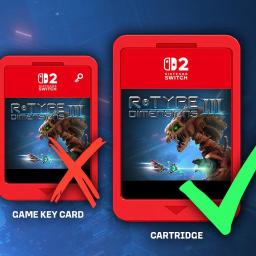 |
by Jackson Chen on (#72A5Z)
Gamers who prefer physical copies of their favorite titles may be getting a major win with the Switch 2. In an unexpected announcement from retro video game publisher ININ Games, Nintendo reportedly has "two new smaller cartridge sizes" for its Switch 2 console. For ININ Games, these rumored game cartridges with smaller storage capacity allow the publisher to recalculate production costs and pursue a physical Switch 2 release of its upcoming R-Type Dimensions III.ININ Games later deleted its posts mentioning these smaller Switch 2 cartridges and issued a correction on its website and social media pages. However, the publisher reiterated that R-Type Dimensions III will be released on a physical cartridge, but that "no further technical details regarding cartridge specifications have been officially confirmed.""There has been no official announcement or confirmation from Nintendo concerning cartridge storage capacities," ININ Games said in a statement. "Any references to specific storage sizes should not be interpreted as official information from Nintendo."If we're reading between the lines, ININ Games may have been early to tease a crucial detail about Switch 2 cartridges that Nintendo wasn't officially ready to reveal yet. For more context, Nintendo reportedly only offers physical game cartridges for Switch 2 with a 64GB capacity. With less demanding games like R-Type Dimensions III, that much storage capacity could be unnecessary and raise production costs. Nintendo still hasn't made an announcement about these potential smaller cartridges, but we could see a lot more game publishers opting for physical copies of their upcoming games if they are indeed an option.This article originally appeared on Engadget at https://www.engadget.com/gaming/nintendo/game-publisher-says-cheaper-switch-2-cartridges-are-coming-in-since-deleted-post-191145230.html?src=rss
|
 |
by Jackson Chen on (#72A4K)
If you still haven't bought into the Steam Deck craze, it'll cost you a little extra to take the plunge now since Valve is only offering OLED models. Valve announced in a note on its Steam Deck page that it's "no longer producing the Steam Deck LCD 256GB model," adding that "once sold out, it will no longer be available." As of this article's publishing, the $399 Steam Deck with LCD and 256 GB of storage, which we ranked as the best gaming handheld for most, is out of stock. Even Valve's refurbished stock of LCD models has been cleared out.The OLED version of the Steam Deck is a worthy upgrade since it comes with a longer battery life and a larger display with a higher refresh rate. However, the LCD model offered an impressive entry price for the Steam Deck and the world of affordable gaming handhelds. Fortunately for existing owners, Valve said it plans to continue supporting the LCD models with future software updates.For now, potential buyers will have to choose between the new entry-level pricing of $549 for the OLED model with 512GB of storage or upgrading to 1TB and paying at least $649. Valve's choice to discontinue its last remaining LCD model isn't surprising after it did the same with the 512GB version and the 64GB option that was available when the Steam Deck was first released in 2022.This article originally appeared on Engadget at https://www.engadget.com/gaming/valve-discontinued-the-last-remaining-lcd-model-of-the-steam-deck-171548195.html?src=rss
|
 |
by Engadget on (#6G2EQ)
If you have a white elephant gift exchange at work this year or with friends and family, there's a good chance you're scrambling right now to find a good gift - or decipher what even makes a good white elephant gift. The possible origins of the term white elephant" provide one way of looking at it: According to legend, the King of Siam would give a white elephant to courtiers who had upset them. It was a far more devious punishment than simply having them executed. The recipient had no choice but to simply thank the king for such an opulent gift, knowing that they likely could not afford the upkeep for such an animal. It would inevitably lead them to financial ruin.
|
 |
by Engadget on (#6S6R4)
This time of year has a lot of merry and bright things to be excited about, but it can be stressful if you're stumped on what to get your mom, dad, best friend, coworker or kids' teacher as a holiday gift. Whether you enjoy or dread buying gifts for people, it's safe to say we all want to give our loved ones things they will enjoy and appreciate. But there's a lot of noise, junk and bad deals disguised as good deals to sift through as we get closer and closer to the holidays.
|
 |
by Cheyenne MacDonald on (#7208R)
If you haven't yet upgraded to Apple's AirPods Pro 3, you can pick up the company's latest model at a discount through a deal on Amazon right now. The AirPods Pro 3, which came out in September, are currently down to $199. That's $50 off and the best price we've seen. With the new AirPods Pro, Apple made some big improvements, including better battery life and sound quality, and introduced useful new features, such as Live Translation. The AirPods Pro 3 are the best AirPods available today, with Apple's H2 chip, and earned a score of 90 out of 100 in Engadget's review this fall. Active noise cancellation (ANC) is one of the biggest selling points of the AirPods Pro, and Apple has made the experience even better with the AirPods Pro 3. They sport new foam-infused ear tips that create a better seal to improve passive noise isolation, and as Engadget's Billy Steele wrote in his review, "Ultra-low-noise microphones combine with advanced computational audio to silence even more background noise." In testing, they had no problem blocking out the chatter of people nearby or otherwise noisy environments. With the AirPods Pro 3, Apple introduced heart-rate sensing, so you'll be able to see your heart rate data from the earbuds in the Fitness app and other workout apps. The AirPods Pro 3 also boast Live Translation, which you can activate via controls on the earbuds themselves. As long as you have an Apple Intelligence-capable device, you'll be able to translate in-person conversations in English, French, German, Italian, Japanese, Korean, Portuguese, Spanish and Chinese (Mandarin). Follow @EngadgetDeals on X for the latest tech deals and buying advice.This article originally appeared on Engadget at https://www.engadget.com/deals/airpods-pro-3-drop-to-a-record-low-of-199-222806196.html?src=rss
|
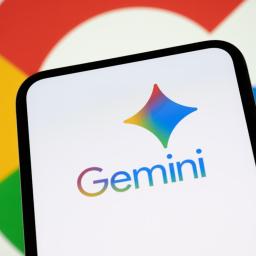 |
by Mariella Moon on (#72A0M)
Google wanted to remove Assistant from most Android phones by the end of 2025 and replace it with Gemini. But now the company has announced that it needs a bit more time to make its AI assistant the new default digital helper for most of its users. Google said that it's adjusting its previously announced timeline to "make sure [it delivers] a seamless transition" and that updates to convert Assistant to Gemini on Android devices will continue into the next year. The company also said that it's sharing more details in the "coming months," so it's possible that the transition will go past early 2026.Assistant's retirement was pretty much expected the moment Google launched Gemini and started giving it Assistant's capabilities, such as the ability to control smart devices connected to your phone. It launched the Pixel 9 Series with Gemini as the default assistant back in 2024. The company has also been putting Gemini in all of its products and previously said that it plans to upgrade all "tablets, cars and devices that connect to your phone, such as headphones and watches" with the AI-powered chatbot. Devices do have to meet a few minimum requirements to get the upgrade, however, and must be running Android 10 and come with 2GB of RAM at the very least.This article originally appeared on Engadget at https://www.engadget.com/ai/google-assistant-will-stick-around-a-bit-longer-than-expected-for-some-android-users-130000178.html?src=rss
|
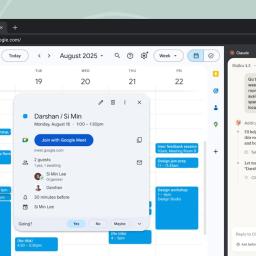 |
by Ian Carlos Campbell on (#729S4)
Anthropic is finally letting more people use Claude in Google Chrome. The company's AI browser plugin is expanding beyond $200-per-month Max subscribers and is now available to anyone who pays for a Claude subscription.The Claude Chrome plugin allows for easy access to Anthropic's AI regardless of where you are on the web, but its real draw is how it lets Claude navigate and use websites on your behalf. Anthropic says that Claude can fill out forms, manage your calendar and email and complete multi-step workflows based on a prompt. The latest version of the plugin also features integration with Claude Code, Anthropic's AI coding tool, and allows users to record a workflow and "teach" Claude how to do what they want it to do.
|
 |
by Will Shanklin on (#729MS)
Behold Mark Zuckerberg: man of principle. Witness the Meta CEO's dedication to the most high-minded of causes: "currying favor with whoever's in charge." In 2013, when Barack Obama was president, Zuckerberg co-founded FWD.us, a pro-immigration advocacy group. For years, he vocally supported providing paths to citizenship for "the most talented and hardest-working people, no matter where they were born." Now, in 2025, with Donald Trump back in power and pushing draconian immigration policies, Zuckerberg's philanthropy organization has officially cut ties with the group. Who says Big Tech executives don't stand for anything?On Friday, Bloomberg reported on the Chan Zuckerberg Initiative (CZI) severing its ties with FWD.us. Zuckerberg's group provided no funding to the advocacy group for the first time this year. Up to that point, over half of the roughly $400 million donated to the nonprofit since 2013 had come from CZI.In addition, CZI's chief of staff, Jordan Fox, resigned from the FWD.us board. No one else at CZI will fill the vacant slot, another first for the pro-immigration and justice reform advocacy group.In a statement to Engadget, a spokesperson for CZI said the change had been in the works for several years. Nearly five years ago, we shared that we were focusing on our core work in science, education, and supporting our local communities," the spokesperson said. As part of that transition, we committed foundational funding to FWD.us to continue their bipartisan work. We have fulfilled that financial commitment and wound down our social advocacy funding." She added that the couple's Biohub initiative is currently their primary philanthropy."Mark Zuckerberg listens attentively to Stephen Miller at Trump's January inaugurationBRENDAN SMIALOWSKI via Getty ImagesIn late 2024, Zuckerberg met with Trump adviser Stephen Miller, who reacts to brown-skinned humans being sent to foreign gulags the way my dog responds to a juicy steak. Among other topics during the exchange, Miller reportedly questioned Zuckerberg's ties to FWD.us.Apparently, his words resonated with Zuckerberg's principles. In January, before Trump was sworn in for his second term, Meta unleashed an overhaul that reads like a Miller wishlist. The company ended its diversity, equity and inclusion (DEI) programs. That same month, it ditched third-party fact-checkers, calling them "too politically biased." It also changed its policies to allow for "insulting language" on topics of immigration and LGBTQ+ issues. The company even added Trump backer Dana White to its board.It fits a broader pattern of Big Tech bending the knee to Trump."We're in the middle of a pretty rapidly changing policy and regulatory landscape that views any policy that might advantage any one group of people over another as something that is unlawful," Zuckerberg told the New York Times in January. "Because of that, we and every other institution out there are going to need to adjust.""We now have a US administration that is proud of our leading companies, prioritizes American technology winning and that will defend our values and interests abroad," Zuckerberg said in a January investor call. "I am optimistic about the progress and innovation that this can unlock, so this is going to be a big year."What a big year indeed.US Chief Border Patrol Agent, Gregory Bovino and masked ICE agents in New OrleansRyan Murphy via Getty ImagesNow witness the contrasting words of one of Zuckerberg's chief rivals in Silicon Valley. "When you meet these [immigrant] children who are really talented, and they've grown up in America, and they really don't know any other country besides that, but they don't have the opportunities that we all enjoy, it's really heartbreaking, right?" the tech executive said. "That seems like it's one of the biggest civil rights issues of our time."That "rival," of course, was Obama-era Mark Zuckerberg in 2013.Despite the funding setback, thanks to our principled hero, FWD.us will press forward. "We're thankful to our donors, past and present, and so grateful to the many new donors who have stepped up in the past few years - and particularly the influx of new supporters we have seen this year," FWD.us President Todd Schulte said in a statement. "This allows us to fight for immigrants under attack today and to build a better approach to immigration and criminal justice reform for many, many years to come."Update, December 19, 2025, 1:19PM PT: This story was updated to include a statement from a spokesperson for the Chan Zuckerberg Initiative.This article originally appeared on Engadget at https://www.engadget.com/big-tech/mark-zuckerbergs-nonprofit-cuts-ties-with-the-immigration-advocacy-group-he-co-founded-183447900.html?src=rss
|
 |
by Ian Carlos Campbell on (#729Q2)
Netflix is acquiring Estonian startup Ready Player Me, a company creating "cross-game avatar tech" that allows players to bring their digital personas with them to different games, the company's CEO Timmu Toke shared in a LinkedIn post. The acquisition is part of Netflix's new games strategy, which puts an emphasis on approachable multiplayer titles and adaptations of the streaming service's IP.Ready Player Me's team of around 20 employees will be incorporated into Netflix's staff, TechCrunch writes, though Toke is the only one of the startup's four founders who will continue on after the acquisition. Neither company has shared when the avatar tech will be incorporated into Netflix's games or what games will support the feature when they do.Besides designing its avatar system to be easy for developers to implement in their games, Ready Player Me's big pitch for their system is using AI to automatically redesign avatars for different games' art styles and "automatically fit assets to any avatar rig or topology without manual work."Netflix has taken multiple different approaches to games in the last few years, but lately, the company has actively retreated from AAA development and its more ambitious projects. Other than the premiere of its take on HQ Trivia, Netflix's last few game announcements of 2025 were focused on a collection of streamable party games, and a partnership with FIFA to release a new soccer sim in 2026. All of those projects could support avatars in one form or another, now Netflix just needs to decide how.This article originally appeared on Engadget at https://www.engadget.com/gaming/netflix-is-acquiring-game-avatar-maker-ready-player-me-204443001.html?src=rss
|
 |
by Will Shanklin on (#729Q3)
It looks like the holidays aren't a bad time to shop for a VPN subscription. ExpressVPN, Engadget's pick for the best premium provider, currently has a less premium price. This deal gives you two years of the Advanced plan (with a bonus of four free months) for only $101. When it isn't on sale, the same subscription would cost $392. Engadget's VPN guru, Sam Chapman, praised ExpressVPN's service. He described it as "high-performing" and having "very few flaws." The service received high marks for its speeds, easy-to-use interface and global network availability. The only significant mark against it was its relatively high standard pricing. But with this holiday sale, that criticism is (temporarily) null and void. ExpressVPN recently switched to a multi-tier pricing structure. (That previously mentioned Advanced plan is the mid-range one.) There's a cheaper Basic plan that allows 10 simultaneous devices (compared to the Advanced plan's 12) and doesn't include perks like a password manager. You can also choose the highest-priced Pro plan. It allows for 14 simultaneous devices and adds several extras. You can compare plans on ExpressVPN's website. When buying a two-year plan, the Basic tier is available for $2.79 per month (78 percent off). The Advanced plan is $3.59 per month (74 percent off). And the Pro plan is $5.99 per month (70 percent off). All three include the bonus of four additional months, giving you 28 total. Follow @EngadgetDeals on X for the latest tech deals and buying advice.This article originally appeared on Engadget at https://www.engadget.com/deals/get-up-to-78-percent-off-expressvpn-two-year-plans-for-the-holidays-194912043.html?src=rss
|
 |
by Valentina Palladino,Amy Skorheim,Jeff Dunn on (#6VRS3)
The iPad, of course, isn't the only tablet computer out there - it wasn't even the first - but Apple's version redefined the category. In our opinion, it's the best tablet you can buy and these slates consistently earn high scores in our reviews. That doesn't mean you should have to pay full price for your next iPad. We are continually on the hunt for good deals on iPads (and other Apple gear while we're at it) and each week, we round them up right there.
|
 |
by Lawrence Bonk on (#729MT)
Amazon is selling Apple's USB-C Magic Mouse for $68, which is a discount of 14 percent. This isn't a record-low price, but it's darned close. The mouse typically sells for $79, though today's sale only applies to the white model. It's rare for official Apple accessories to go on sale, and the USB-C Magic Mouse is pretty much a must-have for those working on desktop computers. It's also fairly handy when combined with a laptop, letting folks avoid the trackpad. As the name suggests, this mouse charges via USB-C. Apple stuck with replaceable AA batteries for way too long, so this change was much appreciated. A charge should power the mouse for around a month, a metric I find to be more-or-less accurate depending on usage. This is a good mouse, and a great option for Apple devotees, but it's not without its flaws. The biggest one is port placement. The USB-C port is underneath the mouse, rendering it unusable while charging. Bloomberg recently reported that a major redesign is coming for Apple's wireless mouse that should address that issue. Follow @EngadgetDeals on X for the latest tech deals and buying advice.This article originally appeared on Engadget at https://www.engadget.com/deals/apples-usb-c-magic-mouse-is-back-on-sale-for-68-175424709.html?src=rss
|
 |
by Georgie Peru on (#71EH0)
Secret Santa gift exchanges can be chaotic in the best way. One minute you're drawing a name from a hat, the next you're scrambling to figure out what they'd actually like. The trick is finding something that's thoughtful, gets a laugh or feels useful without going over budget. Luckily there are plenty of gifts that do exactly that, whether you're shopping for the office exchange, a family swap or a friend group tradition. From clever gadgets to playful desk toys and little luxuries, these ideas prove you can spend less than $50 and still land the perfect Secret Santa present. Best Secret Santa gift ideas Check out the rest of our gift ideas here. This article originally appeared on Engadget at https://www.engadget.com/the-best-secret-santa-gift-ideas-for-2025-affordable-gifts-you-can-still-get-from-lego-apple-yeti-and-more-130014284.html?src=rss
|
 |
by Lawrence Bonk on (#729HX)
TikTok has signed a deal to spin off its American business, according to reporting from Associated Press and others. This should keep the popular social media app available in the US for good, capping off years of drama.We now have some new data as to the specifics of the deal. Nearly 50 percent of assets will be split between three companies. Oracle, Silver Lake and MGX will each control around 15 percent of the newly-formed entity. It's worth noting that MGX isn't an American company at all, but rather Abu Dhabi's state-owned investment firm.The rest will remain in the hands of affiliates of TikTok's parent company, ByteDance. That company will also take a direct ownership stake of around 20 percent. US platform operations will be managed by a seven-member board of directors. The majority of this board will be Americans.US data will be stored under a system operated by Oracle. That company is run by Larry Ellison, a long-time ally of President Trump who once brainstormed ideas on how to overturn the 2020 presidential election. Oracle has been trying to get its mitts on TikTok since at least 2020. As for Silver Lake, it has deep ties to Trump allies like Michael Dell and his son-in-law Jared Kushner.The deal is expected to close on January 22, according to an internal memo shared by TikTok CEO Shou Chew. "With these agreements in place, our focus must stay where it's always been - firmly on delivering for our users, creators, businesses and the global TikTok community," he wrote to employees.If a deal is truly finalized by next month, it will come just over a year after Trump's first executive order to delay a law that required a sale of the app to prevent a ban. He has signed several other extensions since.This article originally appeared on Engadget at https://www.engadget.com/social-media/we-have-more-details-on-the-tiktok-deal-including-some-ownership-statistics-163003507.html?src=rss
|
 |
by Matt Tate on (#723FJ)
If you have a resolution in the new year to get more acquainted with your finances, a good budgeting app can help with that. One of our favorites is a bit cheaper to sign up for right now: Monarch Money is offering 50 percent off annual subscriptions for new users. Use the code MONARCHVIP at checkout to get half off, so you'll pay just $50 for one year of access. Monarch Money was the runner-up in our guide to the best budgeting apps in 2025, and it was definitely a grower. Initially we found the experience of using the app to be needlessly complicated compared to some of its rivals, but get over that hurdle and it's impressively fully-featured. There are plenty of customization options, a helpful goals" feature and a thorough month-in-review recap that beats out similar features from some of its competitors. We also like how you can grant account access to others. Besides the steep learning curve, we also noted that the mobile app is less intuitive to use than the web version, which might pose a problem if you were hoping to do most of your accounting on the go. We also had some issues with the app failing to distinguish between bills and other recurring expenses, as well as a few bugs along the way. All things considered, Monarch is definitely one of our favorite budgeting apps, only being beaten out by Quicken Simplifi. As you might expect, the biggest strength of Simplifi is its simplicity, and how it eases you into using its various features. If you value that kind of user experience, it might be a better choice for you, but there's unfortunately no free trial to take advantage of. Follow @EngadgetDeals on X for the latest tech deals and buying advice.This article originally appeared on Engadget at https://www.engadget.com/deals/one-of-our-favorite-budgeting-apps-is-50-percent-off-right-now-154056703.html?src=rss
|
 |
by Engadget on (#729F0)
From indies like Silksong, to AAAs like Ghost of Yotei, and everything in between, 2025 truly had it all, and is likely to go down in the history books as one of the best years in gaming. But these are the games that felt truly special to the Engadget team.Arc Raiders I'm genuinely shocked by how much I love ARC Raiders. I've never been very interested in the whole PvE (Player vs. Environment) genre, aside from some brief stints with Destiny, but ARC Raiders's sci-fi post-apocalyptic vibe just works for me. I love the Blade Runner/anime-like aesthetic of its environments, enemies and outfits. I'm a sucker for its synthy soundtrack and immersive soundscape. And somehow, I've just fallen for the game's loop, which involves running out for resources and missions, and hopefully making it back home safe.Sure, I've had a few runs where I've lost all my gear, thanks to random online jerks. But even those setbacks kept me motivated to play. You can always head out into the world with free gear, so if you fail, all you really lose is a bit of time. ARC Raiders reminds me of playing Phantasy Star Online on the Dreamcast decades ago, an early multiplayer experience that's genuinely been hard for me to replicate since then.I sometimes explore maps just to soak up their architecture and environmental sounds. Sometimes I jump in to help other players, especially when they're being harassed by others. Through success or failure, I can't wait to head back in.- Devindra Hardawar, Senior EditorAvowedObsidian kicked off 2025 with a bang, introducing a fresh and deeply engaging fantasy RPG universe in Avowed. It's an expertly crafted and narratively rich adventure through mystical lands blighted by a mysterious fungus, set against a backdrop of political scheming, spiritual manipulation, colonization and resistance. The writing is stellar throughout, though the sidequests that reveal your companions' backstories are particularly poignant. Avowed is gorgeous, its combat systems are fully customizable, its characters are intriguing and its encumbrance limit is generous. There's a real sense of magic about the entire game - and no, that's not just the mind-altering mushrooms talking.- Jessica Conditt, Senior ReporterBaby StepsBaby Steps is a true walking simulator: Your left trigger controls your left leg, and your right trigger controls your right. At first, you'll be stumbling and comically falling every few paces, and it's easy to write the game off as some sort of Octodad affair, where half the fun is dealing with the jank of basic navigation. But before long, you'll find the rhythm and confidently pace through the game's open world.Of course, the challenge ramps up with your skill. Baby Steps has incredibly tight mechanics and a rewarding if punishing difficulty curve. Various surfaces and steeper inclines are introduced, and the game ends with a truly horrific mountain pass. Through it all, you'll be treated to a light but touching story full of comedic improvisation from the game's developers, who voice most of the characters themselves.- Aaron Souppouris, Editor-in-chiefBall X PitI don't usually go in for roguelike-style games, but my colleague Kris Holt convinced me to try Ball X Pit and, in doing so, ruined my autumn. This is, quite simply, one of the most addictive games I've ever played. The base gameplay is rooted in classic Brick Breaker-style games from the 80s. Balls bounce from the bottom to the top of the screen, but instead of hitting and breaking bricks you're bouncing them off a massive series of demonic enemies. There are eight levels and over a dozen different playable characters, each with their own distinct strengths and play styles, and the vast combination of upgrades you can unlock means no run will ever be quite the same.Perhaps the most fun thing about it is unlocking the different fusions and evolutions you can find along the way. Beyond the basic balls that your character shoots, you have slots for special balls that do things like freeze enemies, deal extra damage or blind enemies so they can't accurately attack you. You can combine those special balls into even more powerful weapons, and finding the best evolutions that work with each character and each level adds yet another layer to the madness. While you can easily pick it up and play for 20 or 30 minutes, I've found it pretty difficult to end a session without whiling away multiple hours. Think carefully about whether you're ready to ruin your productivity for a few weeks (or months) before you dive into Ball X Pit.- Nathan Ingraham, Deputy EditorBlue PrinceMy absolute favorite experience in all of gaming is when I'm several hours into a puzzle game and I discover there's more going on than meets the eye. It's the moment where I realize an already-good game is in fact an excellent one, and I want to simultaneously curse the creators' evil brains and applaud their brilliance. I feel fortunate if I have that reaction once during a playthrough. Blue Prince provided me with that experience of total delight many times over.The biggest downside to a game like Blue Prince is that it's hard to talk about. For starters, it defies categorization. Sure, there are some roguelike elements and obviously plenty of puzzles, but playing it goes beyond a single genre tag. And more importantly, the journey of uncovering its surprises is a big reason why this game is so special. If you haven't tried it yet, I strongly suggest you do so and that you read as little about it as possible before diving in. All you need to know is that if you enjoy burrowing ever deeper into a rabbit hole of mysteries and problem-solving, you must play this game. Blue Prince is a real masterpiece by creative lead Tonda Ros and the whole Dogubomb team. It earns all the hype it gets.- Anna Washenko, Contributing ReporterCitizen Sleeper 2: Starward VectorNo game I played this year has stuck with me the way Citizen Sleeper 2: Starward Vector did. At a time when it feels like our governments are failing us and corporate greed is destroying the world, Citizen Sleeper 2 tells a critical story about finding hope and purpose in the people and communities around you. And as great as the original Citizen Sleeper was, the new one is an even better game, with more polished systems that do a great job of reinforcing its narrative themes.There's a good chance many of you missed Citizen Sleeper 2, seeing as it arrived at the start of the year, but if you're feeling down about the state of the world, I can't recommend it enough. It will change your perspective.- Igor Bonifacic, Senior ReporterClair Obscur: Expedition 33Clair Obscur made a striking impression when we first glimpsed it in 2024, with its French dark fantasy aesthetic, its wild concept of a god-like Paintress and a turn-based combat system that seemed uniquely cinematic. It instantly became my most anticipated game of 2025. Thankfully, the game itself lived up to my expectations, with a thrilling story, memorable characters and some of the most beautiful visuals I've ever seen in a game. Sure, its twists and turns might not feel entirely surprising if you're an RPG connoisseur, but no other game captures such a specific vibe. It may not fully stick the landing, but Clair Obscur was certainly one of the most fulfilling narrative experiences I experienced this year.- D.H.Date Everything!This dating sim is witty as heck. That's the first reason I loved Date Everything. The writing is equal parts sharp and sensitive, silly and sincere, with a dose of pointed social commentary in between bouts of flirtation with anthropomorphized household items. Even the artwork is witty, transforming everything from a toaster to a treadmill into attractive humans in wildly clever and creative ways.The second and most important reason I loved this game is that Date Everything is a cavalcade of virtuoso voice acting that must be heard to be appreciated. I've played a bunch of visual novels without voiceover where the writing alone wasn't strong enough to make the characters pop, as well as voiced ones where middling performances detracted from the story. Date Everything's cast of 100 of the best in the business make their dialogue shine (and like I said, the dialogue is really damn good).There are some endearingly obvious casting choices. The horny clothes dryer? Yeah, it's Neil Newbon, who probably charmed your pants off as Astarion in Baldur's Gate 3. Your D&D dice set? It couldn't be anyone but Matt Mercer. On the flip side, Cherami Lee as perky Chairemi (yep, your chairs) was unrecognizable from her stellar turn as V in Cyberpunk 2077. Laura Bailey has voiced countless heroines over the years, so the last place I expected to hear her was screaming her lungs out as one half of the toxic relationship playing out in your laundry room. Whether you're looking for love or laughs, Date Everything is a marvelous showcase of talents that often go underappreciated in gaming.- A.W.DespeloteHaving grown up with grandparents from South America, I'm familiar with a flavor of soccer fanaticism that hasn't quite taken root in the US. What makes Despelote so moving to play in 2025 is how it makes that sports fandom universal. The semi-autobiographical game lets you play your way through narrative vignettes, rendered in a stunning mix of filtered, photorealistic backgrounds and almost comics-inspired characters, primarily with a soccer ball at your feet. There's more to the game than kicking, however.Despelote asks players to walk, run and kick through the life of the game's lead developer Julian Cordero as he recounts his memories of Ecuador's historic attempt to win the World Cup. It's a personal history and national one, and by the end of the game, not quite what it seems. To put it another way: Despelote is melancholy, humorous and quite possibly the first game to capture what soccer means rather just than what it feels like to play.- Ian Carlos Campbell, Contributing ReporterDispatchIf you miss the heyday of Telltale's multiple choice narratives, like The Walking Dead and The Wolf Among Us, and you aren't tired of superheroes yet, you'll love Dispatch. Developed by AdHoc Studio, which was formed by former Telltale alum, it's essentially a workplace dramedy for superheroes. But the mechanics don't matter as much as the characters, who are all uniquely intriguing, sad and hilarious.You play as Robert Robertson III, AKA Mecha Man, a former Iron Man-esque hero who can no longer fight crime on his own. He decides to manage a group of former villains for SDN (the Superhero Dispatch Network), hoping to imbue them with his own ideals of heroism. By day, you assign them to deal with crimes around Los Angeles, but through conversations and crucial Telltale decisions, you also encourage them to work as a team and hopefully become better people (or mutants). Buoyed by strong voice acting (including actors like Aaron Paul as the lead, and Jeffrey Wright in a hilarious supporting role), AdHoc's sharp writing, and excellent animation, Dispatch is a reminder of just how powerful adventure games can be.- D.H.Donkey Kong BananzaThe Switch 2 had a decent enough first year, but there's only one true killer app so far in my mind. Donkey Kong Bananza is the primary reason to pony up for Nintendo's new console. It's a 3D platforming classic up there with any Mario game, which makes sense given that the team behind Super Mario Odyssey made this one.It actually reinvents the formula by adding wanton destruction into the mix. Donkey Kong can destroy just about everything in the game and that's not hyperbole. You can literally spend hours absolutely pummelling entire game worlds into dust. This isn't just a stress reliever, as it leads to new kinds of puzzles and platforming ideas. As a bonus, DK is joined by a young Pauline, making this the cutest riff on The Last of Us ever.- Lawrence Bonk, Contributing ReporterFast FusionFast Fusion is a sci-fi arcade racer that wants little more than to bring the old Wipeout and 3D F-Zero games into modern times. Those games ruled. So does this one.As the name implies, it is seriously fast, and it commits to enhancing that sense of speed with every choice it makes. Whooshing lines drag from the back of your hard-angled, anti-grav ships. Their engines wheeze. The backgrounds blur. Each course is littered with boost pads, and there's a boost meter you can keep persistently charged by taking turns just right. Because this is what some may call a video game-ass video game," you can also make your ship jump, skipping entire turns or launching into a fiery wreck in equal measure.The courses here aren't as thematically consistent as those in Mario Kart World. One minute you're dashing through an Endor-style forest, the next you're dodging tornadoes on a rainy highway. There are no cute mascots, either. But the tracks are spectacles, and they always give room to keep up your pace. When there is an obstacle to dodge, you tend to just whiz by, furthering the sense of threading the needle. In a year unusually loaded with high-profile arcade racers, few are better than Fast Fusion at keeping you engaged. It makes blinking feel risky.- Jeff Dunn, Senior ReporterGhost of YteiSucker Punch Productions' return to a feudal Japan setting is another triumph for the studio. In Ghost of Ytei, the developer crafted a world that I happily got lost in for hours, doing everything and anything but the main story missions until I absolutely had to. There was something to do around almost every corner and some of the game's many secrets were well-hidden. That's not to say the game's plot is anything to sniff at: this is a brutal tale of revenge, featuring rich writing and performances.The open-world format is a little at odds with protagonist Atsu's steely desire for vengeance, but Ghost of Ytei is beautifully orchestrated enough for that to be a minor complaint. The combat is stellar - to be most effective, you'll need to swap between weapons to counter what your current opponent is wielding. Still, I couldn't help but use the kusarigama whenever possible, especially to carry out stealthy assassinations from a distance. Strengthening Atsu's bond with a wild wolf that becomes an ally in combat is also a highlight, while the deeply customizable difficulty settings are very welcome.Like its predecessor, Ghost of Tsushima, this is a technical masterpiece. Sucker Punch created another lush game that will surely be the source of countless desktop backgrounds. Blood-stained snow has rarely looked this good, especially if you enable the Miike Mode (named after director Takashi Miike and his gory films) to really paint the landscape red.- Kris Holt, Contributing ReporterHades 2The first thing to know about Hades II is that it's more Hades. It's the standard roguelite RNG grindfest, but with charm and enough detail-oriented flourishes to disguise what is essentially cranking the arm on a slot machine. The second thing to know is that you are no longer Zagreus, but Melinoe, princess of the underworld, and if you are a gay woman this game exists to roast you mercilessly.Zag was a lovable himbo engaged in a petty dispute against his father and free to romance a variety of Greek gods along the way. By contrast the world around Mel is coming apart at the seams, and her dating options are considerably less satisfying. Several of her in-game relationships with women are written to be warm and reciprocal, but of course they're with the found family of deities who support her. Nemesis and Eris, her two options for romance, seem to actively hate her and, after dozens of runs, are never interested in anything beyond a threadbare situationship.Juggling two different mission paths with their own distinct enemies and biomes is a treat - as are the new, sometimes brutally hard bosses. If only the rest didn't so closely resemble the indignities of dating in your 30s.- Avery Ellis, Deputy EditorIs This Seat Taken?Every incurable people pleaser has been told, at some point in their life, you can't make everyone happy." Perhaps not in life. But in the sweetly cozy, zero-pressure, logic-puzzle indie game Is This Seat Taken? making people happy is not only possible, it's the entire point.The game is set in a line-drawn, sepia-toned Barcelona and other cities. You act as a set of pinching fingers that lifts and places shape-people in their preferred seats - on the bus, in a restaurant, at a movie theater and so on. Each person has preferences (window seat, no bad smells, wants to read) and attributes (forgot to shower, plays loud music) that mesh or conflict.Tiny accessories and icons not only make each shape more adorable, they help keep track of some of their proclivities. Bubbly smiles or heartbreaking frowns tell you whether you've met a seated shape's needs, and tapping on them tells you exactly what they want. A simple story involving a few of the shapes and an indie film takes form as you advance levels, but for the most part, you're just checking in on what people want and arranging them to optimize happiness.I obsessively plowed through the game, soothed by the strummy music, delighted by the plops, bloops and chatters of the sound effects. As more people get on the bus (show up to the coworking space, arrive at the restaurant) it gets increasingly tougher to satisfy everyone - more than once I had to clear everyone off the train and start from scratch - but achieving 100 percent contentment is always possible. And if that's not true IRL, then at least it is here.- Amy Skorheim, Senior ReporterKeeperKeeper is a surprisingly quiet and soul-soothing experience from Double Fine Productions, a studio best known for sassy, cartoon-style games like Costume Quest, Psychonauts and Brutal Legend. Keeper is a gorgeous and dialogue-free adventure through fantastical lands of deep shadows and vivid pastels, presented in a claymation-like art style that's a joy to interact with. The game follows a sentient, walking lighthouse and its bird companion as they attempt to reach a mountaintop and cleanse the land of a nasty parasitic presence. Keeper only lasts about four hours tops, but its striking visuals, smooth mechanics and heartwarming story leave a lasting impression.- J.C.Kingdom Come: Deliverance IIKingdom Come: Deliverance II is a modern-day Morrowind. I mean that as a compliment. It's a game built on a series of complex, interlocking systems that work together to create one of the most immersive worlds I've had a chance to experience in recent years.As I guided my version of Henry of Skalitz through Warhorse Studios' beautiful recreation of 15th century Bohemia, I spent dozens of hours doing mundane things like blacksmithing, playing dice, foraging for herbs and concocting potions. Each of these activities feels like it could be a game on its own, and they work together to create an experience that feels refreshingly old-school. No one is making RPGs like Warhorse anymore - not even Bethesda - and that's what makes this game feel so special. It's the kind of experience studios used to make when games didn't need to appeal to everyone to recoup their development costs.- I.B.Look OutsideMonths after its release, Look Outside is still the game I can't shut up about, and it probably will continue to be for the foreseeable future. In Look Outside, your character wakes up to discover that an apocalyptic event has taken place, and anyone who looks outside to observe it is transformed into some sort of abomination. You have to survive two weeks inside your apartment building, gathering resources and, if you're trusting, accumulating allies to fight by your side. There are monsters everywhere, and their designs are wildly creative. It's a joy encountering all of the freakish creatures for the first time.There are tons of choices to make in Look Outside that will affect the course of your playthrough, and there are both moments of gut-wrenching bleakness and sheer absurdity. It's in a league of its own, blending a multitude of horrors - survival horror, cosmic horror, body horror, psychological horror - and captivating artwork (not to mention an S-tier soundtrack) into a gripping RPG that has enough substance to justify playing it again and again.- Cheyenne MacDonald, Weekend EditorLonely Mountains: Snow RidersMost games involving mountains are about a heroic climb. Lonely Mountains: Snow Riders is about a series of humbling descents. This is a physics-driven downhill skiing game that, like its predecessor, starts you at the top of various summits and tasks you with racing to the goal in one piece. The way down is filled with interweaving routes and shortcuts, but there are no directional markers to guide you. Nor is there any music to pump you up, just the sounds of skis cutting into powder, winds whipping, birds chirping, nature being nature.The result is a game that pits you against yourself. You rush down to beat a target time, but you're always fighting gravity and cold, hard earth. So you crash, again and again, until you manage to survive that one clean run. The mountain becomes something to respect, not conquer. It's fast, thrilling and total slapstick: Steering your low-poly, literally blockheaded avatar into a tree or off a cliff is always good for a laugh. (Seeing others do it in multiplayer is even better.) It's also gorgeous, all glistening snow, intimate sounds and serene vistas. More than an enjoyably tense sports game, Snow Riders is a vivid expression of our relationship with nature. Think of it like a more contemplative SSX.- J.D.Metroid Prime 4: BeyondMetroid Prime 4: Beyond is not a perfect game. The story barely hangs together at times, the addition of a squad of companions can really disrupt the atmospheric isolation the series is known for, there are a few unfair difficulty ramps and the open-world desert is a bit of a slog. And yet, it also does so many things right. As with most Metroid games, there are varying biomes to explore, each with a distinct identity and various flora and fauna that do not like intruders. As with most Nintendo games, the design of these levels are excellent across the board, with clever challenges and puzzles that reward continued exploration.But for me, seeing a Metroid Prime game in 4K was worth the price of admission alone. Beyond doesn't reinvent the wheel, but it presents an absolutely gorgeous and immersive spectacle the likes of which we haven't seen in a Metroid game before. Given that Metroid Prime 3: Corruption came out in 2007 on the Wii, a console that maxed out at 480p, seeing the series' impeccable art style brought to life on modern hardware was a delight. It may have some issues, but Metroid Prime 4: Beyond is still worth experiencing.- N.I.Ninja Gaiden RageboundI'd somehow never played a single Ninja Gaiden game until this year, but I could hardly have had a better introduction to the series. The Game Kitchen's Ninja Gaiden Ragebound is an old-school, hack-and-slash platformer with top-notch pixel art, an excellent score and slick level design.The combat helps ensure that everything hangs together. Dual protagonists Kinji Monzu and Kumori (whose souls fuse together) have distinct abilities that work in harmony, and using the right tools to tackle each enemy helps charge up a powerful hyper attack. Ragebound isn't necessarily easy, but it isn't frustrating either - unless you're trying to put it down and do something else, because this is a very absorbing, entertaining game.- K.H.PeakPeak perfectly captures the delightful, simultaneous disasters that can happen when multiple people make stupid decisions at the same time. Ostensibly a multiplayer game about child scouts who crash land on a deserted island and are forced to climb to the top of a mountain to get rescued, Peak's multitude of dangerous biomes, status-affecting consumables and hidden secrets make it fun to get you and your friends killed. The game is an awkward first-person platformer where it's sometimes easier to shoot someone out of a cannon than it is to get them to toddle up a hill, but those obstacles feel good to overcome because the game lets you talk to people while you do it.The term "friendslop" was coined following the popularity of Peak and games like it, a burgeoning micro-genre where games with deceptively simple virtual tasks are paired with proximity-based voice chat. Unsurprisingly, it's fun to play video games with your friends, but Peak stands out because the ongoing support of developers Aggro Crab and Landfall has managed to keep things interesting in the game for nearly half the year.- I.C.C.Oblivion RemasterThere's a comfort in knowing exactly what you're going to get from a game. The Elder Scrolls 4: Oblivion Remastered delivers all the things I love about Bethesda creations. It's a world I want to get lost in, where the detours are the true point of the journey. I become a stealth archer cat person who can cause chaos or save the day. And I can enjoy the studio's signature open-world RPG experience without suffering through the wonky design ideas that made the original game frustrating. For Bethesda fans, this remaster is a joy whether it's your first time playing Oblivion or your fiftieth.- A.W.OooI have a deep appreciation for games that give you a limited set of tools and many ways to use them. Puzzle-platformer Ooo is a brilliantly constructed example of that. It's so thoughtfully crafted that even the name is perfect. The large O looks like the caterpillar character you control and the smaller characters resemble the two bombs that you drag around and use to solve a variety of conundrums. Ooo is also the noise I involuntarily made when I solved some of the puzzles.Nama Takahashi (who made Ooo with help from Tiny Cactus Studio and Tsuyomi) uses deeply clever level design to teach you how to use the bombs and move forward. Takahashi clearly wants you to succeed. Checkpoints are everywhere, so if you die while trying to find a puzzle solution, there's no lengthy runback to worry about. The developer (who previously created ElecHead) even made his own walkthrough video to help you get to the end.Ooo - which you can complete in a single sitting - respects your time. It looks and sounds wonderful too. The music reminds me a lot of the outstanding Poinpy. While I remain sad that it's not currently possible to play that game, I'm more than happy to have Ooo to return to.- K.H.SilksongIt's such a relief to know that, finally, this is probably the last time I'll write about Silksong. (Oh no, more is coming.) Seven years in the making, from DLC to standalone game to Reddit meme, Silksong arrived across pretty much every mainstream gaming platform.The Hollow Knight sequel swaps to a new protagonist, Hornet, who was a recurring boss in the original. She's faster, she can attack in diagonal dives, and just plays pretty differently from the Knight. Off the back of the slowburn hit of Hollow Knight, Team Cherry have lavished more attention, more fun and more diverse boss battles, ensuring this feels like a better (although possibly more challenging) game.I prefer the faster, risk-and-reward playstyle too. Hornet uses silk to heal, which, like soul in Hollow Knight, you build up by attacking enemies. However, Hornet does this in bulk, healing three hearts at once. When you die, you'll leave a bounty of silk behind, making for a tempting health top-up you can grab mid-boss fight. If you don't die before then.You can equip Hornet with different weapon and subweapon loadouts, adding a little more variety in this sequel. Heavy, slower weapon swings, or relentless strikes with a much shorter range? Your choice.When it launched, half the Engadget team were sharing tales of bottlenecks and seemingly impossible boss fights, and we were all exploring the world of Silksong in entirely different directions. That's the blessing and the curse of a Hollow Knight game.- Mat Smith, UK Bureau ChiefSilent Hill fIt's a rare and special thing when a horror game lives up to the gruesome promises of its cinematic teaser trailer, and Silent Hill f accomplishes this and more. Silent Hill f is a heart-pounding survival-horror game set in a rural Japanese village in the 1960s and starring Hinako, a high school student with crappy friends and a tormented home life. Hinako's town is ravaged by demonic creatures and an infectious botanical fungus, and she has to fight her way through it, shifting among realities and encountering a cast of untrustworthy peers and fox worshippers. The combat starts out great and only gets better as Hinako sacrifices her flesh in the name of salvation, meaning the body horror steadily ramps up as the game progresses. Hinako's world is filled with terrifying mannequin minions, bulbous pus monsters and disturbing, trypophobic visuals. It's beautiful.- J.C.Subway BuilderSubway BuilderAaron SouppourisSubway Builder is an indie transport sim like no other. Creator Colin Miller combined OpenStreet maps of large cities with government data about where people live and work. This creates a complex web of nodes representing residents and workplaces for you to connect. You'll start with no public transport infrastructure and try to build out a profitable network. In dense cities like New York this is incredibly easy, but freeing even 20 percent of Phoenix's endless sprawl from cars without going bust is very challenging.The game scratches the same itch for me as Mini Metro, only instead of cutesy vector graphics you're basically working in Google Maps. It's also expanding at a rapid pace: When I first played in October, there were maybe 15 locations, and as of writing there are now 29 US cities and, most recently, five UK options. I spent the first 35 years of my life bouncing around Croydon and Lewisham in London; giving South Londoners a proper tube network (while ignoring anything north of Highbury) has been a real treat.- A.S.Sword of the SeaWhile the game might always be evoked in the same breath as Journey, the PlayStation classic with which it shares a key creative, Sword of the Sea is more than just another beautiful trek towards a mountain. Combining delectable traversal mechanics from The Pathless and beautiful sea creatures like those in Abzu, the game is a culmination of everything developer Giant Squid is good at. More importantly, though, Sword of the Sea's surfing mechanic just looks and feels damn cool.I don't know that I ever mastered how to surf on a sword during Sword of the Sea's silent and surprisingly brief narrative, but I do know it didn't take long to care. Carving through sand and snow immediately came easy enough that getting to any of the game's intriguing landmarks and collectibles was a matter of how, not if. That's not to discredit the game's other charms, like a score from Austin Wintory and a photo mode that's perfect for capturing close encounters with dolphins, whales and sharks. If you need a reason to play Sword of the Sea, though, let it be the surfing. It tells you more about the game and what it wants you to feel than any piece of dialogue could.- I.C.C.SwornLet's get one thing out of the way. Yes, Sworn is a Hades clone, but it's a darned good one. This game swaps out the Olympian gods for characters sourced from Arthurian legend, but the nuts and bolts gameplay is pretty much the same. So why was this one of my favorite games in a year when Hades 2 set the world on fire? The combat is extremely addictive and there are multiple character classes that truly change how everything plays.Some characters are for up close combat and others are better at dropping turrets and related items that do damage over time. It's super fun to litter a bunch of poison-soaked cannons in a level and just let them do their thing. It also has four-player co-op, which is chaotic in all the best ways. The story is totally forgettable when compared to Hades, but that's not why I play roguelites.- L.B.This article originally appeared on Engadget at https://www.engadget.com/gaming/engadgets-favorite-games-of-2025-153000109.html?src=rss
|
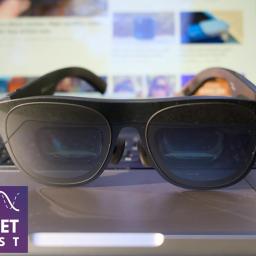 |
by Devindra Hardawar on (#729F1)
This week, Engadget Managing Editor Cherlynn Low joins us to look back at some of the highlights (and lowlights) of 2025. We dive into our favorite gadgets of the year, the many ways Big Tech bowed to Trump, the disappointment of AI PCs and the rise of smart glasses. We also learn way too much about our skincare routines.Subscribe!
|
 |
by Andre Revilla on (#722J1)
If learning a new skill is one of your New Year's resolutions, then you might want to know that MasterClass subscriptions are currently 50 percent off. This brings the top-tier subscription with offline mode and use on up to six devices down from $240 annually to $120. The entry-level plan, which supports just one device and doesn't offer offline viewing, is marked down to $60 from $120. Over the past few years, MasterClass has grown to over 200 classes, sessions and original series. You can learn about entrepreneurship from Richard Branson, screenwriting from Aaron Sorkin, cooking from Gordon Ramsay and heaps more. Each of these offers classes in a one-on-one format with slick instructional videos and often workbooks to accompany them. MasterClass also appears on our list of the best subscription gifts for this Christmas. Loved ones will enjoy superb production quality and a rich library where they are sure to find something that piques their interest. Gift subscriptions can also be scheduled, so you can take advantage of the current sale even for future gifts. If you're buying it for yourself, know that MasterClass offers a 30-day money-back guarantee. Whether you're looking to learn about business from Kim Kardashian or basketball skills from Steph Curry, MasterClass can help you expand your horizons in 2026. The holiday offer is available through December 24. Follow @EngadgetDeals on X for the latest tech deals and buying advice.This article originally appeared on Engadget at https://www.engadget.com/deals/masterclass-deal-get-50-percent-off-subscriptions-for-the-holidays-150520715.html?src=rss
|
 |
by Mariella Moon on (#729CH)
Riot Games has confirmed that it's working on a massive update for League of Legends after Bloomberg published a report saying that the company has plans to remake the game. Back in November, a Chinese esports insider also reported that a League of Legends 2 is in development and is coming as early as the second half of 2026. In a video announcement discussing Riot's plans for League after 2026, executive producer Paul Belleza denied that the developer is working on League 2 like rumors have been suggesting, but he admitted that it is working on a big update that will arrive in 2027.Andrei van Roon, Head of League Studio, then enumerated some of the things his team is already working on, including a brand new around-game client that's fully integrated with the in-game experience, a full visual overhaul of the Summoner's Rift, changes to Runes and an overall improvement to the player experience. The update is looking to be as big as the one from back in the mid-2010s when Riot reworked League's graphics and is meant to bring in new players.Belleza and van Roon said they'll share more details between MSI in the summer and Worlds in the fall of 2026. While the timeline is pretty vaugue, the window of release for a major update like this is most likely the end of November until early January when competitive league is on break.
|
 |
by Sarah Fielding on (#7261J)
It was a big day in gaming history when Nintendo finally released its Switch sequel. But the Nintendo Switch 2 lacked many options for microSD Express cards. Samsung helped change that this fall, with the release of its P9 Express series of microSD Express cards, and now one of them is on sale. Currently, you can pick up the 256GB Samsung P9 Express microSD Express Card for $33, down from $55. The 40 percent discount brings the microSD down to a new all-time low price. That means your new Nintendo Switch 2 gets a lot more memory with transfer speeds reaching 800MB/s. The specs are on par with some of our other favorite microSD cards for the Nintendo Switch 2. Samsung's new microSD also comes with the company's Dynamic Thermal Guard, which should keep things from heating up too much during gameplay. It also works with devices other than the Switch 2, including other gaming consoles, computers, Steam Deck, cameras and more. Follow @EngadgetDeals on X for the latest tech deals and buying advice.This article originally appeared on Engadget at https://www.engadget.com/deals/pick-up-the-samsung-p9-microsd-express-card-for-switch-2-while-its-down-to-a-record-low-141947013.html?src=rss
|
 |
by Mat Smith on (#729AD)
The best phone of 2025: The iPhone 17 Pro, Pixel 10 Pro? Perhaps the Galaxy Z Fold 7? All three rank as some of the best tech we reviewed in 2025.EngadgetWe have compiled all the best gear with our highest review scores in each category, after thousands of hours of testing. We've got the Switch 2, AirPods Pro 3 and DJI's top drone for most of you. Anecdotally, Anker's Laptop Power Bank, with two built-in charging cables, has been the sleeper hit of the Engadget team, with four editors making it their power bank of choice. I think it's the retractable cable.- Mat SmithOpenAI just launched an app store inside ChatGPTSome use locally stored data, and others let you organize Apple Music songs.OpenAI has introduced an app directory right inside ChatGPT. The new apps section (on iOS, Android and web) divides into Feature, Lifestyle and Productivity categories, letting you connect to commonly used apps and even websites like Booking.com, Spotify and Dropbox.With Dropbox, for instance, you can gather insights, prepare briefs and summarize reports or internal documents," using ChatGPT's smarts, according to the description. OpenAI says developers can only monetize apps by linking out from the ChatGPT app to a native app or website, but the company is exploring internal monetization options as well.Continue reading.Trump Mobile's T1 still doesn't exist, but the company is now selling refurbished phonesWho wouldn't want to overpay for an old phone?The T1 smartphone from Trump Mobile remains non-existent vaporware, but you can still give the company your money. If you want, you can buy a refurbished phone from Trump Mobile. The business's website lists Samsung S24 and S23 and the iPhone 15 and 14. Gizmodo noted Trump Mobile is selling other brands' phones at the same price as or higher than other retailers.Continue reading.Sony is buying Snoopy, Charlie Brown and the rest of PeanutsIt will own 80 percent of the franchise.PeanutsIt's the wildcard news story no one saw coming. Sony, of Walkman and PlayStation fame, is buying an 80 percent stake of Peanuts for a cool $460 million. Sony already bought 39 percent of the franchise back in 2018 - something most of us were entirely unaware of.Continue reading.The other big stories (and deals) this morning
|
 |
by Steve Dent on (#729AE)
SpaceX said it experienced an anomaly with one if its Starlink satellites that was likely caused by a small explosion. "The anomaly led to venting of the propulsion tank, a rapid decay in semi-major axis by about 4 km [2.5 miles] and the release of a small number of trackable low relatively velocity objects," Starlink wrote in a post on X. Orbital tracking company LeoLabs assessed that the issue was caused by an "internal energetic source rather than a collision with space debris or another object."SpaceX said it's working with NASA and the US Space Force to track the remains of the object. "The satellite is largely intact, tumbling and will reenter the Earth's atmosphere and fully demise within weeks," the company said. It's trajectory is well below the International Space Station (ISS) so it poses no risk to the lab or its crew. Starlink has yet to say how many pieces it's tracking.The incident happened just days after a Starlink satellite narrowly avoided a collision with a rival Chinese satellite from CAS Space last week. Starlink vice president Michael Nicholls said that the incident happened due to a lack of coordination between the two companies. "When satellite operators do not share emphemeris for their satellites, dangerously close approaches can occur in space," he wrote on X.Starlink's constellation consists of almost 9,300 active satellites making up around 65 percent of all orbiting spacecraft, not including defunct units. That number grew by more than 3,000 this year alone, launched aboard 121 separate SpaceX missions - around one every three days.This article originally appeared on Engadget at https://www.engadget.com/science/space/a-starlink-satellite-just-exploded-and-left-trackable-debris-120002814.html?src=rss
|
by James Trew on (#6A2NH)
If you want to hear Apple Music's lossless catalog the way it was meant to sound, you will need a little extra hardware. iPhones and most wireless headphones still have limitations when it comes to high-resolution audio, which means a good DAC can make a real difference in clarity and detail. Whether you listen through wired earbuds, studio headphones or a home speaker setup, the right DAC can bring out far more texture in your music.
 |
by Mariella Moon on (#7293J)
Sony is paying approximately $460 milliion to purchase Peanuts [PDF] and its characters, including Snoopy and Charlie Brown, created by Charles M. Schulz. That's a 41 percent stake Sony is buying from Canadian firm WildBrain. Since Sony bought 39 percent of the franchise back in 2018, this will give the company an 80 percent stake. The deal is still subject to regulatory approvals, but Peanuts will become Sony's consolidated subsidiary once it's closed. Schulz's family still owns the remaining 20 percent stake in the franchise.Schulz launched the Peanuts universe in comic strips 75 years ago, back in 1950. The franchise has grown massively since then, spawning animated series, cartoon musicals and movies that made Snoopy a household name. The company said that it has focused on expanding the Peanuts IP since it bought 39 percent of the brand years ago. With this additional ownership stake, we are thrilled to be able to further elevate the value of the PEANUTS brand by drawing on the Sony Groups extensive global network and collective expertise," Sony Music Entertainment Japan CEO Shunsuke Muramatsu added.This article originally appeared on Engadget at https://www.engadget.com/big-tech/sony-is-buying-peanuts-022341467.html?src=rss
|
 |
by Karissa Bell on (#7292J)
Remember back in September when President Donald Trump signed an executive order that seemingly finalized some of the terms of a deal to spin off TikTok's US business? Three months later, that same deal is apparently one step closer to being official.According to Bloomberg, TikTok CEO Shou Chew told employees that TikTok and ByteDance had signed off the agreement for control of TikTok's US business. It sounds like terms of the deal are roughly the same as what Trump announced earlier this year. A group of US investors, including Oracle, Silver Lake and MGX will control a majority of the new entity while ByteDance will keep a smaller stake in the venture.According to Chew's memo, the deal is expected to close January 22, 2026. Upon the closing, the US joint venture, built on the foundation of the current TikTok US Data Security (USDS) organization, will operate as an independent entity with authority over US data protection, algorithm security, content moderation and software assurance," he wrote according to Bloomberg. TikTok didn't immediately respond to a request for comment.Notably, it's still not clear where Chinese officials stand on the deal. Trump said back in September that China was "fully on board," but subsequent meetings between the two sides have so far produced vague statements. In October, China's Commerce Ministry said it would "work with the U.S. to properly resolve issues related to TikTok."If a deal is indeed finalized by next month, it will come almost exactly a year after Trump's first executive order to delay a law that required a sale or ban of the app front taking effect. He has signed off several other extensions since.This article originally appeared on Engadget at https://www.engadget.com/social-media/trumps-tiktok-deal-is-another-step-closer-to-finally-actually-happening-001813404.html?src=rss
|
 |
by Ian Carlos Campbell on (#72914)
Holiday shopping is in full swing, which means it's about time for the Steam Winter Sale. This go-around, Valve's sale runs from December 18, 2025 through January 5, 2026, and includes discounts on some of this year's hit games, like Clair Obscur: Expedition 33, Silent Hill f and Assassin's Creed Shadows.Clair Obscur is available for $40, down from its normal $50, Silent Hill f is 40 percent off, bringing its price down to $42, and the normally $70 Assassin's Creed Shadows is selling for $35, a solid deal on what was somewhat of a comeback for the long-running Ubisoft series. On top of those sales, you can get Stardew Valley for $9, or the difficult-to-master walking sim Baby Steps for $13. I'm also considering picking up Consume Me for $10 and Ball x Pit for $12, just to round out my collection of indie hits from 2025.Valve runs Steam sales on a pretty regular cadence, so if the game you're eyeing isn't on sale, there's a good chance it could be soon. With holiday vacations coming up, and hopefully time to play games on the menu, though, now's the perfect time to pick up something new. And if you don't get to it this year, consider it an investment of sorts for the Steam Machine you might purchase in 2026.This article originally appeared on Engadget at https://www.engadget.com/gaming/pc/steam-winter-sale-discounts-clair-obscur-silent-hill-f-and-more-230834279.html?src=rss
|
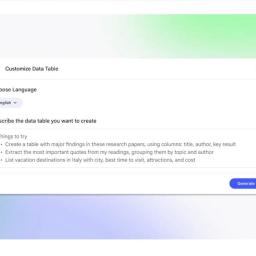 |
by Anna Washenko on (#72915)
Google's latest addition to its NotebookLM artificial intelligence research platform is a feature called Data Tables. The tool can collect and synthesize information across multiple sources into a chart that can be exported to Google Sheets. All Pro and Ultra users will have access to the feature today, and Data Tables will roll out to all users over the coming weeks.In practice, Google suggested that Data Tables can be used to organize scattered notes, create price comparison charts or aggregate results from multiple research projects. The example of the interface shows the desired table components requested in natural language statements.Last month, Google added a Deep Research mode to NotebookLM. Deep Research was initially unveiled for its Gemini chatbot in late 2024 as an option for handling complex user queries.This article originally appeared on Engadget at https://www.engadget.com/ai/googles-notebooklm-introduces-data-tables-feature-225548565.html?src=rss
|
 |
by Anna Washenko on (#728YS)
Several LG smart TV owners, including some Engadget staff, were surprised to find what looked like an unremovable Microsoft Copilot app suddenly installed on their devices earlier this week. After all the raised eyebrows, a representative from LG has reached out to say that the company "will take steps to allow users to delete the shortcut icon if they wish."According to the spokesperson, the Copilot icon is a shortcut for launching the AI chatbot in the TV's web browser rather than an application embedded in the appliance. We've asked for more specifics about when people will be able to get rid of the Copilot prompt, but have not received a response at this time.Apparently we're still learning the lessons of U2's notorious iTunes album giveaway. It might seem like free additions would be something people would enjoy, but it turns out customers want to choose which services they use. Particularly when smart TVs don't have the best track record on privacy, the surprise appearance of an AI chatbot wasn't likely to be well received.This article originally appeared on Engadget at https://www.engadget.com/ai/lg-will-let-you-delete-the-previously-unremovable-microsoft-copilot-shortcut-on-its-smart-tvs-215352944.html?src=rss
|
 |
by Will Shanklin on (#728W5)
The ripples of the auto industry's chip shortage are still being felt, as evidenced by Honda. Bloomberg reported on Wednesday that the automaker will suspend production in Japan on January 5 and 6. (Honda didn't specify the affected factories.) In addition, all three of the automaker's Guangqi Honda Automobile plants in China will shut down from December 29 to January 2.The halt is an outgrowth of a chip shortage stemming from a recent geopolitical proxy war in the Netherlands, of all places. In October, the Dutch government, bowing to pressure from the Trump administration, seized control of the Chinese-owned chipmaker Nexperia. The company, which operates in the Netherlands, makes low-end chips that power automobiles, appliances and other tech.The Dutch government's official explanation for the seizure was that Nexperia had "serious governance shortcomings." It cited a concern that Nexperia's Chinese majority owner, Wingtech, would move key technology out of Europe. However, the New York Times later reported that the Dutch government had known about those plans since 2019.Regardless, China retaliated by blocking exports of Nexperia-made chips. The Netherlands eventually suspended its intervention, following "constructive talks." China then relaxed (but did not entirely remove) its restrictions through exemptions to export controls. The uneasy resolution hasn't been enough to help supply chains fully recover.Honda initially anticipated that production would return to normal starting in late November. So much for that. "No one [in the auto industry] prepared for geopolitical disruption," automaker consultant Ambrose Conroy, CEO of Seraph Consulting, told Reuters in November. "And they're still not prepared."This article originally appeared on Engadget at https://www.engadget.com/transportation/auto-chip-shortage-honda-will-pause-production-in-japan-and-china-200857591.html?src=rss
|
 |
by Ian Carlos Campbell on (#728W6)
Displace first tried its hand at reimagining the TV in 2023, with a wireless screen that suctions onto walls and features built-in rechargeable batteries. At CES 2026, the company is not only introducing new versions of its own TVs, it's also showing off the Displace Hub, an accessory that can make other TVs wireless.The Displace Hub is a wall-mounting system with some extra bells and whistles. It combines the "active-loop suction" of Displace's TVs, with a rechargeable battery that can power whatever screen you mount on it and a built-in PC that runs Displace's "ambient computing platform." The Hub uses an Intel N-150 4-core CPU with an integrated GPU, 16GB RAM and 128GB of storage to run Displace's operating system, and includes a 15,000mAh battery to keep everything powered. The Hub also has two HDMI inputs for external devices and supports Displace's Controller 2.0, which offers a second screen for additional information and content.The Displace Hub uses the same "active-loop suction" system as the Displace TV.DisplaceThe mounting system does have some notable limits, however. Displace says the Hub can support weights up to 150 pounds, and is specifically designed to mount TVs between 55 and 100 inches, which might rule out the TV you already own. The battery life of the Displace Hub could also be a concern. Connecting your TV to the Hub's integrated battery is supposed to eliminate the need for unsightly power cables, but depending on how often you watch and the energy demands of your screen, you might be recharging fairly often. Displace says the Displace Hub's battery life lasts anywhere from five to 10 hours. While the Hub can be recharged while keeping your TV mounted at the same time, having to plug and unplug your TV setup from a charger seems like it could defeat the point of having a wireless TV in the first place.Other TV makers have tried to offer mostly wireless screens at CES in the past, like the LG Signature OLED M3 and the Samsung Neo QLED 8K QN990F, which use wireless breakout boxes to stream HDMI connections to their TV screens. Both of those TVs were focused on reducing the number of cables that you connect to your screen rather than eliminating cables entirely, though, a goal that still comes with tradeoffs based on the limitations of the Displace Hub.Displace hasn't announced a release date for the Displace Hub, but the company says that the mounting system will cost $1,900 at launch and will be available to pre-order during CES 2026.This article originally appeared on Engadget at https://www.engadget.com/home/home-theater/the-displace-hub-can-make-your-normal-tv-wireless-193837460.html?src=rss
|
 |
by Lawrence Bonk on (#728W7)
Apple just announced it will be integrating more ads into the App Store because our poor eyeballs must be assaulted at all times. The company plans on littering search results with advertisements beginning next year.Currently, the App Store only has one ad spot. That's at the very top of search results. If you search for something like Instagram it's likely that top spot will be filled with an ad for a rival social media platform. The new ads will appear further down the actual search results.Apple says that advertisers won't have to alter their campaigns, as the ads will "run in either the existing position - at the top of search results - or further down in search results." The company says that 65 percent of app downloads happen after a search, so this move will "give advertisers more opportunities."Google began inundating the Play Store with more ads last year and, well, the results haven't been pretty. The general consensus is that the store has become more frustrating to use. We'll have to wait and see just how intrusive these App Store ads end up being.Recent reporting also indicates that Apple plans on bringing ads to the Maps app. This is reportedly scheduled for next year, though the company has yet to comment.This article originally appeared on Engadget at https://www.engadget.com/apps/apple-is-bringing-even-more-ads-to-the-app-store-193416921.html?src=rss
|
 |
by Anna Washenko on (#728W8)
The T1 smartphone from Trump Mobile remains non-existent vaporware, but the company is still finding new ways to take people's money. Anyone who desperately wants to fund this sham can now buy a refurbished phone from the company. The business's website has listings for "Renewed" models of the Samsung S24 and S23 and the iPhone 15 and 14. Gizmodo noticed that Trump Mobile is selling these other brands' phones for the same cost, or sometimes more, than the same refurbs from other retailers.Seems pretty par for the course.NBC News opted to order one of the T1 phones in August to track its development. "After confirming with the credit card company that the transaction was not fraudulent, NBC News received a confirmation email verifying the order," the publication said in a report last month. However, it has not received much communication from the company on why the phone still has not shipped. "Neither Trump Mobile nor the Trump Organization responded to NBC News' multiple requests for comment on when the phone would be released and why it's delayed."In case you missed the previous acts of sketchiness from Trump Mobile, the company insisted at its debut that the phone was made in the US. That seemed like a dubious claim and the "made in the USA" language was quietly removed from the website shortly after.This article originally appeared on Engadget at https://www.engadget.com/mobile/smartphones/trump-mobiles-t1-still-doesnt-exist-but-the-company-is-now-selling-refurbished-phones-191740570.html?src=rss
|
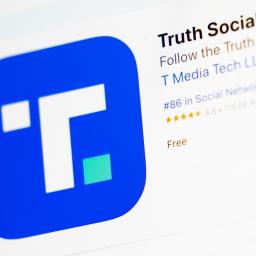 |
by Lawrence Bonk on (#728SQ)
Trump media, the company behind the president's personal social media platform Truth Social, is inexplicably merging with a Google-backed fusion energy company called TAE Technologies. The deal is worth $6 billion, according to reporting by Financial Times.Why is an entity known for publishing frenzied hot takes by the president at 3AM combining with a fusion energy company? Who the heck really knows, but a statement says the two organizations will join together to build the "world's first utility-scale fusion power plant." This would be huge, if true, as there are currently no operational commercial nuclear fusion power plants.
|
 |
by Will Shanklin on (#728SR)
You can add Japan to the list of regions where Apple has been forced to do something it would rather not: open up the App Store. On Thursday, the company announced changes to iOS in Japan to comply with the nation's Mobile Software Competition Act (MSCA). The tighter regulations for Apple and Google, which overlap with Europe's, took effect today. Users in the US and elsewhere won't see any of these changes.Apple's changes in iOS 26.2 in Japan revolve around alternative app stores, payments outside the App Store and browser choice. The company worked with Japanese regulators on new protections for increased security risks.The company calls this set of safeguards Notarization. It involves an authorization process for alternative app stores and child-safety protocols. Third-party marketplaces will need to undergo a baseline security review. This uses a combination of human and automated checks to block malware and other threats.Naturally, Apple cautions that Notarization is less comprehensive than the App Store's reviews. "The App Store - where every app is reviewed to meet the App Store's high bar for privacy and security - remains the best place for iOS users in Japan to discover and download the apps they love," the company wrote.To state the obvious, the App Store is a booming business for the iPhone maker. In 2024, it generated $1.3 trillion in total sales. Opening it up poses a threat to one of the company's most reliable revenue streams. Big Tech seems to talk a lot about fewer rewards and more penalties for users when their own money trees are at risk.Apple CEO Tim Cook in Tokyo in October 2025ANDREW CABALLERO-REYNOLDS via Getty ImagesiOS 26.2 in Japan also introduces new payment options. Developers can now use non-Apple payment processors within their apps or link to external websites for purchases. (Children's content is exempt from this.) Here, Apple again warns the user about the penalties for doing something that will hurt its bottom line. "For apps that use alternative payment processing or link users to the web for transactions, Apple will not be able to issue refunds and will have less ability to support customers encountering issues, scams or fraud," the company cautioned.The last big change involves picking defaults within the operating system. Users in Japan will see new browser and search engine choice screens. They'll also find default controls for navigation apps and app stores. Finally, developers can now offer browsers that use alternative engines other than Apple's WebKit.Apple's announcement comes a day after Google detailed its compliance with the MSCA. Since Android is more open than iOS, Google's changes in response to the regulations are a bit less pronounced. Android users will find new browser / search choice screens, expanded billing options and side-by-side comparisons of external vs. Play Store payment options.This article originally appeared on Engadget at https://www.engadget.com/mobile/apple-opens-up-ios-in-japan-in-response-to-new-regulations-174854950.html?src=rss
|
 |
by Ian Carlos Campbell on (#7274S)
If you're struggling to find your next binge-watch, you can't go wrong with anime. For the holidays, you can save on a Crunchyroll subscription, giving you access to its vast library of anime series to watch. Through December 29, you can sign up for an annual Fan subscription for $67, down from the usual $80, or a Mega Fan subscription for $100, down from $120. While both the Fan and Mega Fan plans are ad-free, you do get some different benefits depending on which you decide to pay for. Fan subscribers get full access to Crunchyroll's library, new episodes "shortly after they air in Japan" and five percent off select purchases in the Crunchyroll Store. Mega Fan subscribers get all those benefits, plus the ability to stream on four devices at the same time, download HD quality episodes and movies to view offline, play games from the Crunchyroll Game Vault and receive 10 percent off select products in the Crunchyroll Store. Notably missing from either subscription is access to Crunchyroll's new Manga service, but unless you're specifically looking for reading material, you'll get plenty of entertainment out of Crunchyroll's video library. Outside of Netflix, which produces and licenses its own growing collection of anime, Crunchyroll is the de facto place to watch Japanese animation in the US. You'll find long-running series like One Piece and newer hits like Spy X Family, alongside hundreds of more niche series. Crunchyroll has its issues, of course. Since the streaming service was acquired by Sony, it's been particularly interested in using generative AI to subtitle shows, which has already produced poor results. It's hard to beat Crunchyroll's library, though, and for as little as $65, you'll get more than your money's worth. Check out our coverage of the best streaming deals for more discounts, and follow @EngadgetDeals on X for the latest tech deals and buying advice.This article originally appeared on Engadget at https://www.engadget.com/deals/save-on-crunchyroll-annual-subscriptions-this-holiday-season-194345431.html?src=rss
|
 |
by Lawrence Bonk on (#728P9)
Amazon just introduced a new feature for Alexa+ called Greetings. This lets Alexa+ answer the doorbell and converse with visitors, which certainly sounds futuristic in a "gated community as dystopia" kind of way.There are several caveats here. First of all, it only works with certain newer Ring video doorbell models. Customers also have to pony up for a Ring Premium Plan and have access to the Alexa+ early access build. It's available in the US and Canada and only in English.If you meet those criteria, this could be a fairly useful little feature. Amazon says it "transforms your Ring doorbell into an intelligent assistant capable of determining who's at your door, understanding what they need and responding conversationally." The company promises that the tool operates whether people or home or out doing errands.How does this work? It's an AI algorithm that "determines who's there based on what they're wearing, holding or their actions." It will use "visual context, any information the visitor shares and the instructions it's been given to help manage interactions on your behalf."Amazon says that it can, for instance, distinguish if a person is wearing a delivery uniform and tell them to leave the package at the back door. Most of my delivery drivers don't come to the door in full uniforms because it's winter and that would be ridiculous. I don't even expect that during the summer. In other words, this is modern AI and mistakes will happen.The company gives other examples of how this could be used, like gathering messages from friends who stop by and telling door-to-door salespeople to (politely) bug off. Amazon also says Alexa+ will be able to direct visitors to water and snacks that have previously been laid out. Finally, there's a way to avoid those pesky cute kids on Halloween while still providing them with treats.Everything can be reviewed later on via the Ring app, which should provide context as to who has been hanging around the porch. Alexa+ Greetings are rolling out today.For the uninitiated, Alexa+ is Amazon's updated chatbot. It's more conversational than the old Alexa, which could be useful or annoying depending on what you use it for. I use Alexa primarily as an alarm, so I don't necessarily want a gabfest.This article originally appeared on Engadget at https://www.engadget.com/ai/alexa-can-now-answer-your-ring-doorbell-and-talk-to-people-162712774.html?src=rss
|
 |
by Igor Bonifacic on (#728K8)
If you're like me, it's probably been a hot minute since you've used or even thought of Meetup. Predating both Facebook and Twitter, the website, which was designed to help people organize in-person events, has changed hands a handful of times in recent years.In 2017, founder Scott Heiferman sold it to WeWork, which offloaded it a few years later before declaring bankruptcy in 2023. As of 2024, Bending Spoons, the Italian tech company that's probably best known for buying Evernote in 2022, has been running Meetup.In the aftermath of the pandemic, the platform has seen something of resurgence. As of late 2025, Gen Z and young Millennials make up 40 percent of Meetup's active user base and represent its most engaged group of users. This year, the app has also seen a 20 percent year-over-year increase in new registrations. Going into 2026, Bending Spoons is hoping to build on that momentum with a redesign of Meetup's mobile app.The new interface, which starts rolling out today, brings the Android and iOS app inline with Meetup's recently redesigned website. Across the application, users can expect updated fonts, new more colorful icons and better spacing. The goal of the redesign is to make the app "vibrant, fun and more modern than before," says Chiara Vivaldi, Meetup's product lead. She adds the redesigned app retains all the key features found in the previous version, while making those easier to find. For instance, users can access their profile and groups directly from the homepage of the app.Beyond making Meetup feel more modern, Bending Spoon is using the redesign to cement the groundwork for a series of improvements it plans to roll out in the coming months.Soon, Meetup users will be able to see a breakdown of the people who have signed up for an event.Bending SpoonsAccording to Vivaldi, one major priority is to give people, particularly women, more confidence to attend the events that are listed on Meetup. When you navigate to an event page in the new app, you'll see a broad gender and age breakdown of the users who have signed up to be there. Additionally, new and richer user profiles allow people to get a better sense of who exactly they might meet if they decide to go. Bending Spoons is also introducing a new Super Organizer badge it plans to award to the platform's top event planners. It's designed to signal to users that the person who put together the event takes community building seriously.Taken together, Vivaldi says these features are designed to reduce the friction of attending events where you might not know anyone, and they're something the company plans to build on in the future.At the same time, Bending Spoons plans to make it easier for organizers to use Meetup. Starting early next year, the company will unify Meetup's two disparate apps - right now, the company maintains separate ones for members and organizers. Vivaldi says organizers can expect the unified app to include all of the features they depend on, alongside a handful of enhancements. For instance, Vivaldi's team is working to make QR-based ticketing the norm for check-ins and attendance tracking. She says the move to a single app is informed by the fact that 75 percent of Meetup's organizers got their start as a member."[Organizers] are part of the community. They want to be in the action, and so having them within the same app is conducive to that. They can jump into conversations, look at other events, making it all feel a bit more organic," Vivaldi said. In the meantime, if it's been since you've used Meetup, you can download the redesigned app from the App and Google Play stores.This article originally appeared on Engadget at https://www.engadget.com/mobile/meetups-new-mobile-app-is-designed-to-make-it-easier-to-meet-people-irl-150000920.html?src=rss
|
 |
by Sarah Fielding on (#726Y4)
This time of year is not only a good time to save on gifts, but also to save on tech you may need (or want) for yourself. If you've been thinking about upgrading your computer, you can save right now on Apple's Mac mini M4. The desktop is down to $479, which is 20 percent off its usual price and the same low price we saw during Black Friday. Apple released the Mac mini M4 in late 2024 and we were impressed with how something so small could be so powerful. We gave it a 90 in our review, thanks to features like its speed and standard 16GB of RAM. The - currently - $479 base model also comes with 256GB of SSD. We were also happy to see it had front-facing USB-C and headphone ports. If you really want to go all out for someone's gift (or for yourself) then you can buy one of the Mac mini M4's higher memory or storage options. You can pick up the Mac Mini M4 with 16GB of RAM and 512GB of SSD for $690, down from $799 - a 14 percent discount. Meanwhile, the 24GB of RAM and 512GB of SSD model is 11 percent off, dropping to $890 from $999. Check out our coverage of the best Apple deals for more discounts, and follow @EngadgetDeals on X for the latest tech deals and buying advice.This article originally appeared on Engadget at https://www.engadget.com/deals/apples-mac-mini-m4-is-on-sale-for-479-right-now-150041630.html?src=rss
|
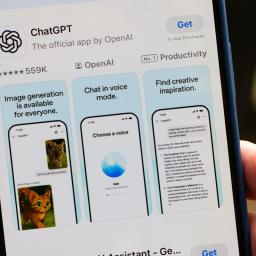 |
by Steve Dent on (#728GR)
OpenAI has introduced an app directory that's now available right inside ChatGPT, the company announced. "Apps extend ChatGPT conversations by bringing in new context and letting users take action like order groceries, turn an outline into a slide deck or search for an apartment," the company wrote in a blog post. OpenAI also noted in a help document that "connector" apps like Google Drive are now simply called "apps."The new apps section (on iOS, Android and web) is divided into Feature, Lifestyle and Productivity categories, letting you connect to commonly used apps and sites like Booking.com, Spotify and Dropbox. To use an app, simply click on it, hit "Connect" then authorize the app to access ChatGPT. With that done, you can then start a chat related to that app. In the case of Dropbox, for instance, you'll be able to "gather insights, prepare briefs and summarize reports or internal documents," according to the description. Once connected, any app can be accessed by doing an @ mention of it.A new addition that came along with the store is an Apple Music app that, like Spotify, helps users find music, create playlists and manage their libraries through a chat interface. Another is DoorDash, which lets you transform recipes, meal planning and staples into "an actionable shopping cart."Along with the app directory, OpenAI is now allowing developers to submit apps for review and publication in ChatGPT according to the company's app submission guidelines. It also published resources to help developers build such apps, including best practices, open-source example apps, an open-sourced UI library for chat-native interfaces and a step-by-step quickstart guide. That's on top of the software developer kit (SDK) that OpenAI introduced in October.OpenAI noted that for now, developers can only monetize apps by linking out from the ChatGPT app to the native app or website - but the company is exploring internal monetization options as well. Privacy was also emphasized, with companies required to provide "clear" policies.The new feature is a big part of Sam Altman's promises to make ChatGPT more versatile with the addition of custom "GPT" bots. "Over time, we want apps in ChatGPT to feel like a natural extension of the conversation, helping people move from ideas to action, while building a thriving ecosystem for developers," the company wrote.This article originally appeared on Engadget at https://www.engadget.com/ai/openai-just-launched-an-app-store-inside-chatgpt-133049586.html?src=rss
|
 |
by Lawrence Bonk on (#728GS)
The Ultrahuman Ring Air now has the capacity to track snoring and general respiratory health. This is thanks to proprietary technology called Respiratory Health PowerPlug, which is basically a suite of audio analysis tools along with some "advanced biomarker tracking" and AI tomfoolery.All of this results in "one of the most comprehensive consumer tools ever built for understanding nighttime respiratory stability." It details snoring sessions, of course, but also delivers a holistic and "actionable sleep picture." The company says this "reveals patterns, trends and changes in respiratory health over time."UltrahumanTo that end, it can also detect coughing and respiratory disturbances. This data is cross-referenced with movement patterns, sleep fragmentation patterns and resting heart rate to "show exactly how breathing issues shape sleep quality." The company says this can be a good resource when experimenting with interventions, like switching to a new pillow or taping up the nose.More health data is never a bad thing, but this information isn't free. Ultrahuman is charging $4 per month for access to the tool, though folks can pick up an annual subscription for $40.The Ultrahuman Ring Air made our list of the best smart rings, and that was before the company introduced this new software. It tracks an impressive amount of data and integrates with third-party devices like glucose monitors.This article originally appeared on Engadget at https://www.engadget.com/wearables/ultrahuman-brings-snoring-detection-and-respiratory-health-tracking-to-the-ring-air-130054901.html?src=rss
|
 |
by Mariella Moon on (#728GT)
The Federal Trade Commission has sent Instacart a civil investigative demand, seeking information about its AI-powered pricing tool, according to Reuters. This comes after a recently published pricing experiment study showed that the online grocery delivery app gave different users different prices for the same items from the same store location at the exact same time. Some of the testers saw prices up to 23 percent higher than what the other testers saw, though the average difference for the same list of items was around 7 percent. Those higher prices could cost customers over $1,000 more in expenses for the year.The Federal Trade Commission has a longstanding policy of not commenting on any potential or ongoing investigations," the FTC told Reuters in a statement. But, like so many Americans, we are disturbed by what we have read in the press about Instacart's alleged pricing practices."When the study came out, Instacart told Engadget that the pricing variances were caused by some of its retail partners doing limited, short-term and randomized tests" to better understand consumers. Those randomized pricing tests were enabled by Instacart's AI pricing tool called Eversight developed by a company it purchased in 2022. Instacart told CNBC that much of what's been reported has mischaracterized how pricing works" on its platform. The spokesperson repeated that retailers conduct pricing tests on its app and said that prices on Instacart do not change in real time," aren't based on supply or demand and that it never uses personal, demographic, or user-level behavioral data to set item prices."This article originally appeared on Engadget at https://www.engadget.com/apps/the-ftc-is-reportedly-investigating-instacart-over-its-ai-pricing-tool-130000472.html?src=rss
|
 |
by Steve Dent on (#728GV)
Earlier this year Sony sued Tencent for copyright infringement over its Light of Motiram game, calling it a "slavish clone" of Horizon Zero Dawn. Then, earlier this month, Tencent agreed to stop promoting and publicly testing the game. Now, the two companies have reached a "confidential settlement" and the case has been dismissed, according to court documents seen by The Verge. Light of Motiram has also disappeared from Steam and Epic's game stores."SIE and Tencent are pleased to have reached a confidential resolution and will have no further public comment on this matter," Tencent's spokesperson told The Verge.When Sony first filed its lawsuit in July 2025, it said that Tencent's game appeared to copy aspects of not just Horizon Zero Dawn, but other franchise games including Horizon Forbidden West and Lego Horizon Adventures. That included the post-apocalyptic setting with humans and machines coexisting, the visual appearance of characters and even the marketing materials - something Engadget certainly noticed when Tencent first announced the game.This article originally appeared on Engadget at https://www.engadget.com/gaming/sony-settles-with-tencent-over-slavish-horizon-clone-120042886.html?src=rss
|
 |
by Billy Steele on (#6S1QM)
Apple's AirPods have become the default choice for many people, whether you want simple wireless earbuds that work without fuss or premium options with features like noise cancellation and spatial audio. The lineup has grown over the years, so there is now a model for almost every type of listener. Some pairs are built for all-day comfort, others focus on isolation and richer sound, and Apple's over-ear option offers a more immersive experience for movies and music.
|
by Jon Fingas,Valentina Palladino on (#69NT4)
There's a good chance you own a couple of gadgets that support wireless charging now, be it your iPhone or Android phone, wireless earbuds or smartwatch. Multi-device wireless chargers can help power them all up in one place, without the need for a bunch of cords messing up your space. There are dozens of these accessories out there today, and we've tested a bunch of the most popular models. You'll find out top picks below for the best wireless charging pads, plus some advice on how to choose the right one for your needs. Table of contents
 |
by Anna Washenko on (#7286B)
LG is teaming up with Dolby for a new collection of speakers that the companies are unveiling ahead of CES 2026. The LG Sound Suite features a modular lineup the H7 soundbar, M7 and M5 wireless surround speakers and the W7 subwoofer. The speakers can be combined in more than two dozen different configurations, from a pair to a full 13.1.7 channel surround sound home theater setup.The main pitch of the LG Sound Suite is its application of Dolby Atmos FlexConnect. This is the audio brand's tech for optimizing sound from wherever wireless speakers are placed. It's meant to deliver optimal sound even from unusual locations, even when you're limited by outlet locations, furniture placement or other quirks of a room's layout. The collaboration with LG brings FlexConnect to a soundbar for the first time. When the H7 soundbar is used as the lead device, the suite will bring Dolby Atmos FlexConnect audio to any television. In a future software update, LG will also bring support for Dolby Atmos FlexConnect directly to some of its premium TVs, including select 2025 models.This article originally appeared on Engadget at https://www.engadget.com/audio/speakers/dolby-and-lg-introduce-a-modular-home-audio-system-for-ces-2026-010000126.html?src=rss
|